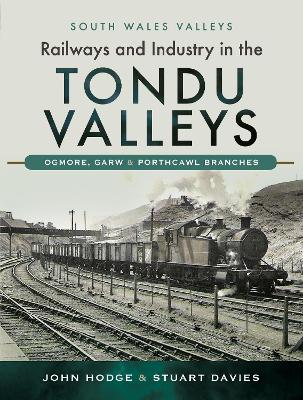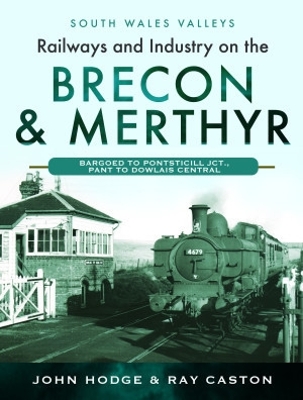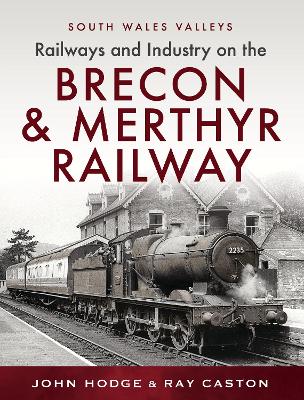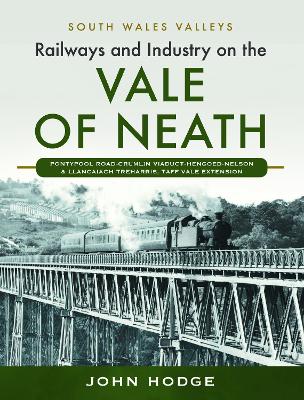South Wales Valleys
6 total works
This is the first in a new series on the South Wales Valleys by John Hodge, author of the South Wales Main Line series and North and West series, each of four volumes. The South Wales Valleys were famous for coal mining, iron and steel, tinplate works and the railways that served both industries, between them accounting for a very high percentage of employment in the area. This book relates the history of the early years of each industry and follows this through the railway steam and diesel age to the present day. The book traces the original Newport stations of Courtybella and Dock Street for the Valleys services and how this changed to High Street from 1880. Individual sections are presented on each main railway activity, accounts of each location along the route with sections on the railway layout, collieries and other industrial concerns, all illustrated by an abundant supply of photographs of the railway steam and diesel era, with accounts of the many collieries from the early years of the nineteenth century, to the end of coal mining in the Western Valley in 1989.A detailed, widely illustrated series on the valleys such as this, is long overdue and this first book in the series.
The book is divided into two parts, the first covering the area as far as Aberbeeg and the second continuing to the heads of the Valley at Ebbw Vale and Brynmawr, as well as an account of the Hall's Road line.
The book is divided into two parts, the first covering the area as far as Aberbeeg and the second continuing to the heads of the Valley at Ebbw Vale and Brynmawr, as well as an account of the Hall's Road line.
The books give a history of the railway, coal mining and other industrial aspects of each Valley that combine to make up the Tondu Valleys with detailed comments on the operation of the railway, passenger and freight, and details of each colliery within the area and their place within the South Wales coalfield. Details are provided on individual aspects of railway operation. Each location is studied in detail with abundant photographs of railway and colliery activity. This is the first time such a study of this area has been undertaken in such detail.
The study of Porthcawl traces its development from a dock to a seaside resort with supporting photographs of both aspects.
This volume will give the reader an ample knowledge of this important part of South Wales as part of a series of books on the South Wales Valleys, to complement the two books on the Western Valley already produced.
The study of Porthcawl traces its development from a dock to a seaside resort with supporting photographs of both aspects.
This volume will give the reader an ample knowledge of this important part of South Wales as part of a series of books on the South Wales Valleys, to complement the two books on the Western Valley already produced.
This book covers the railway and industrial history of the lines that once operated in the Sirhowy valley in South Wales.
Railways and Industry in the Sirhowy Valley, is the first full history of the railways that served this important area of Welsh industry, covering all aspects of its rail transport and manufacturing history.
Being the latest volume in an ongoing series of books, covering the history and development of rail transport in the South Wales valleys.
The area once boasted some very important industrial manufacturers, including the Tredegar Iron Works and numerous other iron smelting companies.
This volume covers the industrial, economic and social history of this fascinating area of the South Wales valleys and the railway that once served the area.
Railways and Industry in the Sirhowy Valley, is the first full history of the railways that served this important area of Welsh industry, covering all aspects of its rail transport and manufacturing history.
Being the latest volume in an ongoing series of books, covering the history and development of rail transport in the South Wales valleys.
The area once boasted some very important industrial manufacturers, including the Tredegar Iron Works and numerous other iron smelting companies.
This volume covers the industrial, economic and social history of this fascinating area of the South Wales valleys and the railway that once served the area.
This book on the Brecon & Merthyr, deals with the section from Bargoed to Pontsticill Junction, covering the line built by the B&M to join onto the section running north from Bargoed built by the Rhymney Railway, much dominated at the time by nearby Dowlais Ironworks. Included is the short section from Pant to Dowlais Central. It contains photographs of every location along the line, including many that have not before been published. The volume includes a fascinating account of the Pantywaun Marshalling Yard, operative until Dowlais Ironworks ceased production, when the B&M ran freight services to and from Pantywaun, before the many collieries and levels in the area were closed almost overnight and the location finally obliterated under the development of Cwmbargoed Opencast.
Railways and Industry on the Brecon & Merthyr Railway
by John Hodge and R J Caston
Published 7 July 2023
The third in a trilogy on the Brecon & Merthyr Railway, this book covers the line from Merthyr to Pontsticill where it met the line from Newport and continued to Brecon. Between Pontsticill and Brecon the line ran through beautiful scenery with reservoirs on the west side and the Brecon Beacons on the east with the famous Seven Mile bank to test the ability of fireman not to stall their engine. The book is hugely illustrated as it passes through Pontsticill and on through Dolygaer, Pentir Rhiw, Torpantau and Talybont on Usk, this being one of the most scenic sections of the Western Region. Talyllyn and Brecon itself are also very well illustrated giving an idea also of the variety of services that ran into Brecon, not only from Newport, but from Neath, Hereford and Mid-Wales. Passenger services to Brecon from all these places were withdrawn in December 1962, though freight, mostly domestic coal, services from Merthyr continued until 1964\. The area is not without some passenger services however in the present day as the Brecon Mountain Railway has been developed between Pant, Pontsticill and Torpantau. This final volume of three provides views in stark contrast to the industrial section at the south end of the Brecon & Merthyr where it runs through the South Wales Coalfield and the former iron producing areas of Merthyr and Dowlais.
This book covers the Vale of Neath line, the eastern portion of which was originally the Taff Vale Extension line, opened in the mid 19th Century, and taking in all the locations in this first book. It was unique in South Wales railway history as it was the only line running east to west across several of the valley lines which ran north to south, with connecting junctions into and from each. The line was famous for the iconic Crumlin Viaduct, hailed as one of the best examples of technological achievement during the Industrial Revolution and lasting 107 years until the line was closed as a through route in 1964. The line ran through several important valley towns, creating need for High Level and Low Level stations at several locations. The standard gauge Taff Vale Extension originally ran as far as Mountain Ash where it met and amalgamated with the broad gauge Vale of Neath line from Neath to Aberdare and Merthyr, locations that will be dealt with in future volumes. Fortunately the line was well photographed as the coverage given to each location will show.





